Hemp vs Marijuana: The Difference Explained
Due to almost a century of misinformation about Cannabis, the distinction between Cannabis and its two primary species — hemp and marijuana — has become unclear to the many and some even consider the three plants to be one and the same. Because of this, the three terms are often used interchangeably, which has created difficulties when understanding the usage and benefits of Hemp vs Marijuana and Cannabis in general.
So, what exactly is the difference between Cannabis, Hemp and Marijuana?
Keep reading to learn more and discover important details you may have never known!
Cannabis, Hemp and Marijuana
Cannabis is a family of plants with two primary classifications — Indica and Sativa. While marijuana can be considered a member of either the Indica or Sativa families, Hemp is a member of the Cannabis Sativa family.
Because Hemp and Marijuana both derive from the Cannabis Sativa family, they do share certain similarities; however, due to each plant’s biological structure, they have several very distinct and crucial differences.
Hemp vs Marijuana: Anatomy
To the untrained eye, hemp and marijuana can appear similar, but if you know what to look for,
Marijuana features broad leaves, dense buds and has a short, bushy appearance. In stark contrast, Hemp features skinny leaves that are concentrated towards the top of the plant and grows taller and skinnier than Marijuana, with few branches beneath its upper portion.
When compared side by side, the two plants can each clearly be identified. As we dive deeper into the anatomy of the two plants, each has crucial differences in their chemical composition.
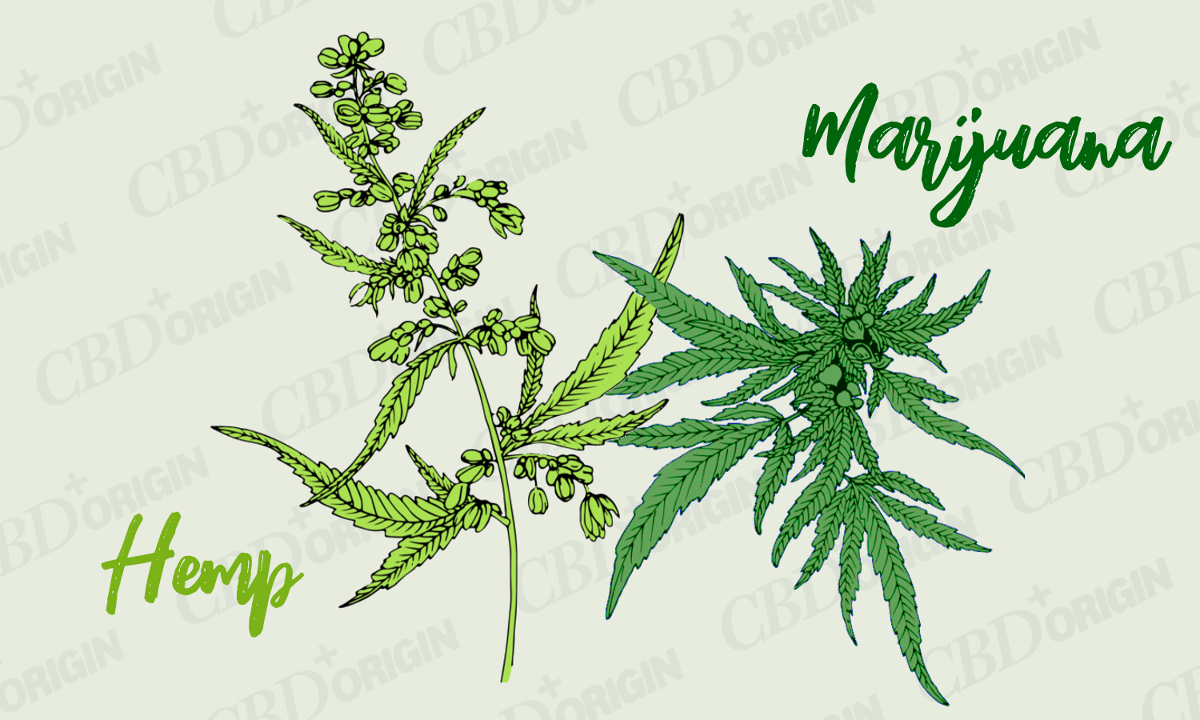
Hemp vs Marijuana: Composition
Cannabis contains a variety of different compounds called Cannabinoids, two of rich, and the most dominant are Tetrahydrocannabinol (THC) and Cannabidiol (CBD).
Both Cannabinoids have shown to provide profound benefits to the human body; however, THC induces psychoactive effects (gets the user “high”), while CBD does not contain any psychoactive properties.
When comparing Hemp vs Marijuana, this is a huge distinction; while Hemp contains a very low concentration of THC (0.3% or less), Marijuana is abundant in THC with concentrations between 15% to 40%.
Because of this, Hemp is grown primarily for industrial purposes, while Marijuana is grown for recreational and medicinal purposes.
Hemp vs Marijuana: Usages
Because Marijuana is abundant in THC, it is naturally grown for its psychoactive properties, whether it be for recreational or medicinal use. Marijuana can be smoked, inhaled, ingested or injected directly into the body. THC is also commonly extracted from the plant and used in a variety of methods including vaporizers, capsules, edibles and more.
Hemp, on the other hand, is primarily used for industrial purposes as it is capable of producing hundreds of crucial resources such as paper, clothing, building materials, biofuel, food products, oils and more. With the fast-growing popularity of CBD across the globe, hemp is also used to produce a wide variety of THC-free CBD products.
Hemp vs Marijuana: Legality
The presence of THC in Hemp vs Marijuana not only plays a huge role in how each plant is used, but it is also the defining factor in the legality of each plant.
Each state/country will have varying laws based on the usage, sales, transportation, and cultivation of Hemp, which will widely depend on the THC-content of the Hemp plant.
In most of the United States, the allowed THC-content for hemp to be classified as legal is 0.3%, while in much of the rest of the world, it is 0.2%.
Because Hemp naturally contains very little THC, it is legal in most parts the world, and where it is not, the legal consequences are minor.
Marijuana is a different story.
Because of its high THC-content, in most parts of the world, including the US, Marijuana is illegal. Seeing the massive economic and medicinal benefits that Marijuana can provide, some countries and states in the US have legalized Marijuana. As the political landscape changes, hopefully, more will follow, but as of now, Marijuana is generally illegal.
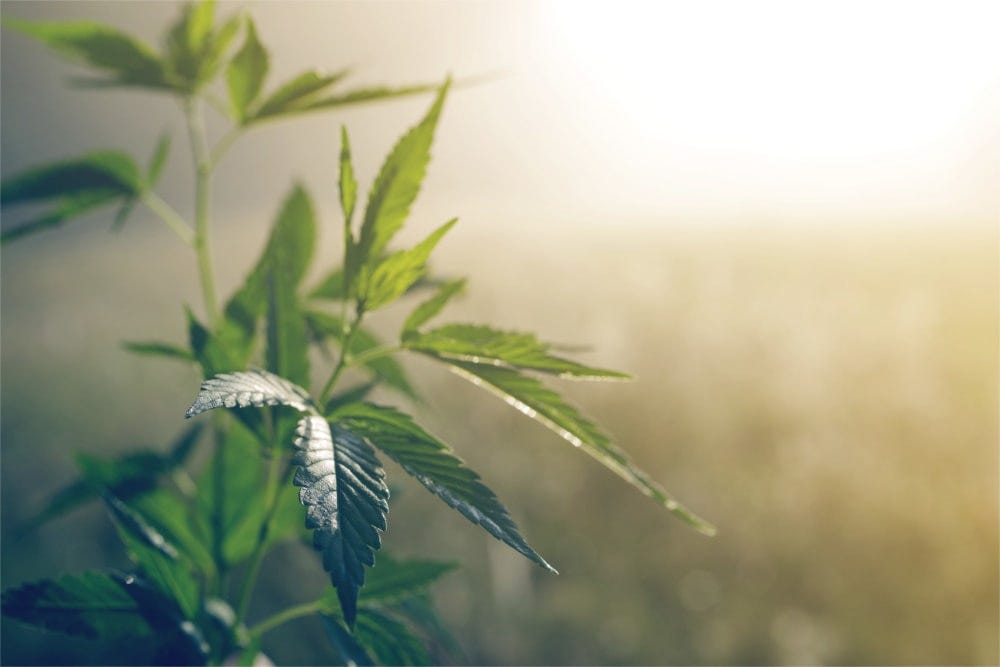
Wrapping It Up…
Now that you’ve finished reading this article, it’s blatantly clear that Hemp and Marijuana are indeed very different plants, and confusing one for the other or both as the same thing is a huge mistake!
Next time you hear a buddy (or anyone for that matter) make that mistake, be sure to educate them on the difference and spread the word about the benefits of each of these amazing plants!
(cc english subtitles available for Thai language section)
The legalization of hemp has been a long time coming for a lot of industries in Thailand, especially the fashion industry. With a lot of heavy regulation still on the cultivation of the plant, clothing designers make due and discuss the use, impact and opportunities of hemp.
(Images in the Video belong to Jimi Hemp).
https://youtu.be/BXkQl9ON5FU
Hemp
A hemp field in Côtes-d'Armor, Brittany, France (Europe's largest hemp producer)
Hemp, or industrial hemp (from Old English hænep),[1] typically found in the northern hemisphere, is a strain of the Cannabis sativa plant species that is grown specifically for the industrial uses of its derived products.[2] It is one of the fastest growing plants[3] and was one of the first plants to be spun into usable fiber 10,000 years ago.[4] It can be refined into a variety of commercial items including paper, textiles, clothing, biodegradable plastics, paint, insulation, biofuel, food, and animal feed.[5][6]
Although cannabis as a drug and industrial hemp both derive from the species Cannabis sativa and contain the psychoactivecomponent tetrahydrocannabinol (THC), they are distinct strainswith unique phytochemical compositions and uses.[7] Hemp has lower concentrations of THC and higher concentrations of cannabidiol (CBD), which decreases or eliminates its psychoactive effects.[7] The legality of industrial hemp varies widely between countries. Some governments regulate the concentration of THC and permit only hemp that is bred with an especially low THC content.[8][9]
Contents
Etymology
The etymology is uncertain but there appears to be no common Proto-Indo-European source for the various forms of the word; the Greek term kánnabis is the oldest attested form, which may have been borrowed from an earlier Scythian or Thracian word.[10][11] Then it appears to have been borrowed into Latin, and separately into Slavic and from there into Baltic, Finnish, and Germanic languages.[12] Following Grimm's law, the "k" would have changed to "h" with the first Germanic sound shift,[10][13] after which it may have been adapted into the Old English form, hænep. However, this theory assumes that hemp was not widely spread among different societies until after it was already being used as a psychoactive drug, which Adams and Mallory (1997) believe to be unlikely based on archaeological evidence.[10] Barber (1991) however, argued that the spread of the name "kannabis" was due to its historically more recent drug use, starting from the south, around Iran, whereas non-THC varieties of hemp are older and prehistoric.[12] Another possible source of origin is Assyrian qunnabu, which was the name for a source of oil, fiber, and medicine in the 1st millennium BC.[12]
UsesEdit
Hemp is used to make a variety of commercial and industrial products including rope, textiles, clothing, shoes, food, paper, bioplastics, insulation, and biofuel.[5] The bast fibers can be used to make textiles that are 100% hemp, but they are commonly blended with other fibers, such as flax, cotton or silk, as well as virgin and recycled polyester, to make woven fabrics for apparel and furnishings. The inner two fibers of the plant are more woody and typically have industrial applications, such as mulch, animal bedding and litter. When oxidized (often erroneously referred to as "drying"), hemp oil from the seeds becomes solid and can be used in the manufacture of oil-based paints, in creams as a moisturizing agent, for cooking, and in plastics. Hemp seeds have been used in bird feed mix as well.[14] A survey in 2003 showed that more than 95% of hemp seed sold in the European Union was used in animal and bird feed.[15]
Food
| Nutritional value per 100 g (3.5 oz) | |
|---|---|
| Energy | 2,451 kJ (586 kcal) |
4.67 g
| |
1.50 g
0.07 g
| |
| Dietary fiber | 4.0 g |
48.75 g
| |
| Saturated | 4.600 g |
| Trans | 0 g |
| Monounsaturated | 5.400 g |
38.100 g
9.301 g
28.698 g
| |
31.56 g
| |
| Tryptophan | 0.369 g |
| Threonine | 1.269 g |
| Isoleucine | 1.286 g |
| Leucine | 2.163 g |
| Lysine | 1.276 g |
| Methionine | 0.933 g |
| Cystine | 0.672 g |
| Phenylalanine | 1.447 g |
| Tyrosine | 1.263 g |
| Valine | 1.777 g |
| Arginine | 4.550 g |
| Histidine | 0.969 g |
| Alanine | 1.528 g |
| Aspartic acid | 3.662 g |
| Glutamic acid | 6.269 g |
| Glycine | 1.611 g |
| Proline | 1.597 g |
| Serine | 1.713 g |
| Vitamins |
Quantity
%DV† |
0%
1 μg
0%
7 μg
| |
| Vitamin A | 11 IU |
| Thiamine (B1) |
111%
1.275 mg
|
| Riboflavin (B2) |
24%
0.285 mg
|
| Niacin (B3) |
61%
9.200 mg
|
| Vitamin B6 |
46%
0.600 mg
|
| Folate (B9) |
28%
110 μg
|
| Vitamin B12 |
0%
0 μg
|
| Vitamin C |
1%
0.5 mg
|
| Vitamin E |
5%
0.80 mg
|
| Minerals |
Quantity
%DV† |
| Calcium |
7%
70 mg
|
| Copper |
80%
1.600 mg
|
| Iron |
61%
7.95 mg
|
| Magnesium |
197%
700 mg
|
| Manganese |
362%
7.600 mg
|
| Phosphorus |
236%
1650 mg
|
| Potassium |
26%
1200 mg
|
| Sodium |
0%
5 mg
|
| Zinc |
104%
9.90 mg
|
| Other constituents | Quantity |
| Water | 4.96 g |
| Cholesterol | 0 mg |
| |
| †Percentages are roughly approximated using US recommendations for adults. | |
Hemp seeds can be eaten raw, ground into hemp meal, sprouted or made into dried sprout powder. Hemp seeds can also be made into a liquid and used for baking or for beverages such as hemp milk and tisanes.[16] Hemp oil is cold-pressed from the seed and is high in unsaturated fatty acids.[17]The leaves of the hemp plant, while not as nutritional as the seeds, are edible and can be consumed raw as leafy vegetables in salads, and pressed to make juice.[18]
In 2011, the U.S. imported $11.5 million worth of hemp products, mostly driven by growth in the demand for hemp seed and hemp oil for use as ingredients in foods such as granola.[19]
In the UK, the Department for Environment, Food and Rural Affairs treats hemp as a purely non-food crop, but with proper licensing and proof of less than 0.2% THC concentration, hemp seeds can be imported for sowing or for sale as a food or food ingredient.[20] In the U.S., imported hemp can be used legally in food products and, as of 2000, was typically sold in health food stores or through mail order.[17]
Nutrition
A 100-gram portion of hulled hemp seeds supplies 586 calories. They contain 5% water, 5% carbohydrates, 49% total fat, and 31% protein. Hemp seeds are notable in providing 64% of the Daily Value (DV) of protein per 100-gram serving.[21] Hemp seeds are a rich source of dietary fiber (20% DV), B vitamins, and the dietary minerals manganese (362% DV), phosphorus(236% DV), magnesium (197% DV), zinc (104% DV), and iron (61% DV). About 73% of the energy in hempseed is in the form of fats and essential fatty acids,[21] mainly polyunsaturated fatty acids, linoleic, oleic, and alpha-linolenic acids.[22]
Hempseed's amino acid profile is comparable to other sources of protein such as meat, milk, eggs and soy.[22] Protein digestibility-corrected amino acid scores (PDCAAS), which attempt to measure the degree to which a food for humans is a "complete protein", were 0.49–0.53 for whole hemp seed, 0.46–0.51 for hempseed meal, and 0.63–0.66 for hulled hempseed.[23]
Storage
Hemp oil oxidizes and turns rancid within a short period of time if not stored properly;[17] its shelf life is extended when it is stored in a dark airtight container and refrigerated. Both light and heat can degrade hemp oil.[24]
Fiber
Hemp fiber has been used extensively throughout history, with production climaxing soon after being introduced to the New World. For centuries, items ranging from rope, to fabrics, to industrial materials were made from hemp fiber. Hemp was also commonly used to make sail canvas. The word "canvas" is derived from the word cannabis.[25][26] Pure hemp has a texture similar to linen.[27]Because of its versatility for use in a variety of products, today hemp is used in a number of consumer goods, including clothing, shoes, accessories, dog collars, and home wares. For clothing, in some instances, hemp is mixed with lyocell.[28]
Building material
Concrete-like blocks made with hemp and lime have been used as an insulating material for construction. Such blocks are not strong enough to be used for structural elements; they must be supported by a brick, wood, or steel frame.[29] However, hemp fibres are extremely strong and durable, and have been shown to be usable as a replacement for wood for many jobs, including creating very durable and breathable homes. The most common use of hemp lime in building is by casting the hemp and lime mix while wet around a timber frame with temporary shuttering, and tamping the mix to form a firm mass; after the removal of the temporary shuttering, the solidified hemp mix is then ready to be plastered with a lime plaster.[30]
The first example of the use of hempcrete was in 1986 in France with the renovation of the Maison de la Turquie in Nogent-sur-Seine by the innovator Charles Rasetti.[31] In the UK hemp lime was first used in 2000 for the construction of two test dwellings in Haverhill.[32] Designed by Modece Architects,[33] who pioneered hemp's use in UK construction, the hemp houses were monitored in comparison with other standard dwellings by BRE. Completed in 2009, the Renewable House is one of the most technologically advanced made from hemp-based materials.[34] The first US home made of hemp-based materials was completed in August 2010 in Asheville, North Carolina.[35]
A panellized system of hemp-lime panels for use in building construction is currently under test in a European Union-funded research collaboration led by the University of Bath. The panels are being designed to assure high-quality construction, rapid on-site erection, optimal hygrothermal performance from day one, and energy- and resource-efficient buildings. The 36-month-long work programme aims to refine product and manufacturing protocols, produce data for certification and marketing, warranty, insurance cover, and availability of finance. It also includes the development of markets in Britain, France, and Spain.[36]
Hemp is used as an internal plaster and is a mixture of hemp hurd (shive) mixed with larger proportions of a lime-based binder. Hemp plaster has insulative qualities.[37]
Plastic and composite materials
A mixture of fiberglass, hemp fiber, kenaf, and flax has been used since 2002 to make composite panels for automobiles.[38] The choice of which bast fiber to use is primarily based on cost and availability. Various car makers are beginning to use hemp in their cars, including Audi, BMW, Ford, GM, Chrysler, Honda, Iveco, Lotus, Mercedes, Mitsubishi, Porsche, Saturn, Volkswagen[39] and Volvo. For example, the Lotus Eco Elise[40] and the Mercedes C-Class both contain hemp (up to 20 kg in each car in the case of the latter).[41]
PaperEdit
Hemp paper are paper varieties consisting exclusively or to a large extent from pulp obtained from fibers of industrial hemp. The products are mainly specialty papers such as cigarette paper,[42]banknotes and technical filter papers.[43] Compared to wood pulp, hemp pulp offers a four to five times longer fibre, a significantly lower lignin fraction as well as a higher tear resistance and tensile strength. However, production costs are about four times higher than for paper from wood,[44] so hemp paper could not be used for mass applications as printing, writing and packaging paper.
Jewelry
Hemp jewelry is the product of knotting hemp twine through the practice of macramé. Hemp jewellery includes bracelets, necklaces, anklets, rings, watches, and other adornments. Some jewellery features beads made from crystals, glass, stone, woodand bones. The hemp twine varies in thickness and comes in a variety of colors. There are many different stitches used to create hemp jewellery, however, the half knot and full knot stitches are most common.
Cordage
Hemp rope was used in the age of sailing ships, though the rope had to be protected by tarring, since hemp rope has a propensity for breaking from rot, as the capillary effect of the rope-woven fibers tended to hold liquid at the interior, while seeming dry from the outside.[45] Tarring was a labor-intensive process, and earned sailors the nickname "Jack Tar". Hemp rope was phased out when manila rope, which does not require tarring, became widely available. Manila is sometimes referred to as Manila hemp, but is not related to hemp; it is abacá, a species of banana.
Animal bedding
Hemp shives are the core of the stem, hemp hurds are broken parts of the core. In the EU, they are used for animal bedding (horses, for instance), or for horticultural mulch.[46] Industrial hemp is much more profitable if both fibers and shives (or even seeds) can be used.
Water and soil purification
Hemp can be used as a "mop crop" to clear impurities out of wastewater, such as sewage effluent, excessive phosphorus from chicken litter, or other unwanted substances or chemicals. Additionally, hemp is being used to clean contaminants at the Chernobyl nuclear disaster site, by way of a process which is known as phytoremediation—the process of clearing radioisotopes and a variety of other toxins from the soil, water, and air.[47]
Weed control
Hemp crops are tall, have thick foliage, and can be planted densely, and thus can be grown as a smother crop to kill tough weeds.[48] Using hemp this way can help farmers avoid the use of herbicides, gain organic certification, and gain the benefits of crop rotation. However, due to the plant's rapid and dense growth characteristics, some jurisdictions consider hemp a prohibited and noxious weed, much like Scotch Broom.[49]
BiofuelsEdit
Biodiesel can be made from the oils in hemp seeds and stalks; this product is sometimes called "hempoline".[50] Alcohol fuel (ethanol or, less commonly, methanol) can be made by fermenting the whole plant.
Filtered hemp oil can be used directly to power diesel engines. In 1892, Rudolf Diesel invented the diesel engine, which he intended to power "by a variety of fuels, especially vegetable and seed oils, which earlier were used for oil lamps, i.e. the Argand lamp."[51][52][53]
ProcessingEdit
Separation of hurd and bast fiber is known as decortication. Traditionally, hemp stalks would be water-retted first before the fibers were beaten off the inner hurd by hand, a process known as scutching. As mechanical technology evolved, separating the fiber from the core was accomplished by crushing rollers and brush rollers, or by hammer-milling, wherein a mechanical hammer mechanism beats the hemp against a screen until hurd, smaller bast fibers, and dust fall through the screen. After the Marijuana Tax Act was implemented in 1938, the technology for separating the fibers from the core remained "frozen in time". Recently, new high-speed kinematic decortication has come about, capable of separating hemp into three streams; bast fiber, hurd, and green microfiber.
Only in 1997, did Ireland, parts of the Commonwealth and other countries begin to legally grow industrial hemp again. Iterations of the 1930s decorticator have been met with limited success, along with steam explosion and chemical processing known as thermomechanical pulping.[citation needed]
Cannabis (drug)
Cannabis, also known as marijuana among other names,[a] is a psychoactive drug from the Cannabis plant used for medical or recreational purposes.[17][18][19] The main psychoactive part of cannabis is tetrahydrocannabinol (THC), one of 483 known compounds in the plant,[20] including at least 65 other cannabinoids.[21] Cannabis can be used by smoking, vaporizing, within food, or as an extract.[22]
| Cannabis | |
|---|---|
|
A flowering cannabis plant
| |
| Product name | Cannabis |
| Pronunciation |
|
| Source plant(s) | Cannabis sativa, Cannabis sativaforma indica, Cannabis ruderalis |
| Part(s) of plant | Flower |
| Geographic origin | Central Asia and Indian subcontinent[2] |
| Active ingredients | Tetrahydrocannabinol, cannabidiol, cannabinol, tetrahydrocannabivarin |
| Main producers | Afghanistan,[3]Canada,[4] China, Colombia,[5]India,[3]Jamaica,[3]Lebanon,[6]Mexico,[7]Morocco,[3]Netherlands, Pakistan, Paraguay,[7]Spain,[3] Thailand, Turkey, United States[3] |
| Legal status |
|
Cannabis has mental and physical effects, such as creating a "high" or "stoned" feeling, a general change in perception, heightened mood, and an increase in appetite.[22][23] Onset of effects is within minutes when smoked, and about 30 to 60 minutes when cooked and eaten.[22][24]They last for between two and six hours.[24]Short-term side effects may include a decrease in short-term memory, dry mouth, impaired motor skills, red eyes, and feelings of paranoia or anxiety.[22][25][26] Long-term side effects may include addiction, decreased mental ability in those who started as teenagers, and behavioralproblems in children whose mothers used cannabis during pregnancy.[22] There is a strong relation between cannabis use and the risk of psychosis,[27] though the cause-and-effect is debated.[28]
Cannabis is mostly used for recreation or as a medicinal drug, although it may also be used for spiritual purposes. In 2013, between 128 and 232 million people used cannabis (2.7% to 4.9% of the global population between the ages of 15 and 65).[29] It is the most commonly used illegal drug both in the world and the United States.[22][29] The countries with the highest use among adults as of 2018 are Zambia, the United States, Canada, and Nigeria.[30]In 2016, 51% of people in the United States had used cannabis in their lifetime.[31] About 12% had used it in the past year, and 7.3% had used it in the past month.[32]
The earliest recorded uses date from the 3rd millennium BC.[33] Since the early 20th century, cannabis has been subject to legal restrictions. The possession, use, and sale of cannabis is illegal in most countries of the world.[34][35] Medical cannabis refers to the physician-recommended use of cannabis, which takes place in Canada, Belgium, Australia, the Netherlands, Germany, Spain, and 33 U.S. states.[36][37] In September 2018, cannabis was legalized in South Africa[38] while Canada legalized recreational use of cannabis in October 2018.[39]
Contents
Uses
Medical
Medical cannabis, or medical marijuana, can refer to the use of cannabis and its cannabinoids to treat disease or improve symptoms; however, there is no single agreed-upon definition.[40][41] The rigorous scientific study of cannabis as a medicine has been hampered by production restrictions and other federal regulations.[42] There is limited evidence suggesting cannabis can be used to reduce nausea and vomitingduring chemotherapy, to improve appetite in people with HIV/AIDS, and to treat chronic pain and muscle spasms.[43][44][45] Its use for other medical applications is insufficient for conclusions about safety or efficacy.
Short-term use increases the risk of both minor and major adverse effects.[44] Common side effects include dizziness, feeling tired and vomiting.[44] Long-term effects of cannabis are not clear.[44] Concerns include memory and cognition problems, risk of addiction, schizophrenia in young people, and the risk of children taking it by accident.[43]
Recreational
Cannabis has psychoactive and physiological effects when consumed.[46] The immediate desired effects from consuming cannabis include relaxation and euphoria (the "high" or "stoned" feeling), a general alteration of conscious perception, increased awareness of sensation, increased libido[47] and distortions in the perception of time and space. At higher doses, effects can include altered body image, auditory and/or visual illusions, pseudohallucinations and ataxia from selective impairment of polysynapticreflexes. In some cases, cannabis can lead to dissociative states such as depersonalization[48][49] and derealization.[50]
A group of people sharing a joint
Some immediate undesired side effects include a decrease in short-term memory, dry mouth, impaired motor skills and reddening of the eyes.[51] Aside from a subjective change in perception and mood, the most common short-term physical and neurological effects include increased heart rate, increased appetite and consumption of food, lowered blood pressure, impairment of short-term and working memory,[52][53] psychomotor coordination, and concentration.
Some users may experience an episode of acute psychosis, which usually abates after six hours, but in rare instances, heavy users may find the symptoms continuing for many days.[54] A reduced quality of life is associated with heavy cannabis use, although the relationship is inconsistent and weaker than for tobacco and other substances.[55] The direction of cause and effect relationship, however, is unclear.[55]
On October 17, 2018, Canada legalized cannabis for recreational adult use[56] making it the second country in the world to do so after Uruguay and the first G7 nation.[57] The Canadian Licensed Producer system may become the Gold Standard in the world for safe and secure cannabis production,[58] including provisions for a robust craft cannabis industry where many expect opportunities for experimenting with different strains.[59]Laws around use vary from province to province including age limits, retail structure, and growing at home.[56]
Spiritual
Cannabis has held sacred status in several religions. It has been used in an entheogenic context – a chemical substance used in a religious, shamanic, or spiritual context[60] - in the Indian subcontinent since the Vedic period dating back to approximately 1500 BCE, but perhaps as far back as 2000 BCE. There are several references in Greek mythology to a powerful drug that eliminated anguish and sorrow. Herodotus wrote about early ceremonial practices by the Scythians, thought to have occurred from the 5th to 2nd century BCE. In modern culture the spiritual use of cannabis has been spread by the disciples of the Rastafari movement who use cannabis as a sacrament and as an aid to meditation. The earliest known reports regarding the sacred status of cannabis in the Indian subcontinent come from the Atharva Veda estimated to have been written sometime around 2000–1400 BCE.[61]
Available forms
Cannabis is consumed in many different ways:[62]
- smoking, which typically involves burning and inhaling vaporized cannabinoids ("smoke") from small pipes, bongs (portable versions of hookahswith a water chamber), paper-wrapped joints or tobacco-leaf-wrapped blunts, and other items.[63]
- vaporizer, which heats any form of cannabis to 165–190 °C (329–374 °F),[64] causing the active ingredients to evaporate into a vaporwithout burning the plant material (the boiling point of THC is 157 °C (315 °F) at atmospheric pressure).[65]
- cannabis tea, which contains relatively small concentrations of THC because THC is an oil (lipophilic) and is only slightly water-soluble (with a solubility of 2.8 mg per liter).[66]Cannabis tea is made by first adding a saturated fat to hot water (e.g. cream or any milk except skim) with a small amount of cannabis.[67]
- edibles, where cannabis is added as an ingredient to one of a variety of foods, including butter and baked goods. In India it is commonly made into a beverage, bhang.
- capsules, typically containing cannabis oil, and other dietary supplement products, for which some 220 were approved in Canada in 2018.[39]
Adverse effects
Addiction experts in psychiatry, chemistry, pharmacology, forensic science, epidemiology, and the police and legal services engaged in delphic analysisregarding 20 popular recreational drugs. Cannabis was ranked 11th in dependence, 17th in physical harm, and 10th in social harm.[68]
Short term
Acute effects may include anxiety and panic, impaired attention and memory, an increased risk of psychotic symptoms, [b] the inability to think clearly, and an increased risk of accidents.[70][71][72] Cannabis impaired a person's driving ability, and THC was the illicit drug most frequently found in the blood of drivers who have been involved in vehicle crashes. Those with THC in their system were from three to seven times more likely to be the cause of the accident than those who had not used either cannabis or alcohol, although its role is not necessarily causal because THC stays in the bloodstream for days to weeks after intoxication.[73][74][c]
According to the United States Department of Health and Human Services, there were 455,000 emergency room visits associated with cannabis use in 2011. These statistics include visits in which the patient was treated for a condition induced by or related to recent cannabis use. The drug use must be "implicated" in the emergency department visit, but does not need to be the direct cause of the visit. Most of the illicit drug emergency room visits involved multiple drugs.[77] In 129,000 cases, cannabis was the only implicated drug.[78][79]
The short term effects of cannabis can be altered if it has been laced with opioid drugs such as heroin or fentanyl.[80] The added drugs are meant to enhance the psychoactive properties, add to its weight, and increase profitability, despite the increased danger of overdose.[81][82][d]
Long term
Heavy, long-term exposure to marijuana may have biologically based physical, mental, behavioral and social health consequences and may be "associated with diseases of the liver (particularly with co-existing hepatitis C), lungs, heart, and vasculature".[84] It is recommended that cannabis use be stopped before and during pregnancy as it can result in negative outcomes for both the mother and baby.[85][86] However, maternal use of marijuana during pregnancy does not appear to be associated with low birth weight or early delivery after controlling for tobacco use and other confounding factors.[87] A 2014 review found that while cannabis use may be less harmful than alcohol use, the recommendation to substitute it for problematic drinking was premature without further study.[88] Various surveys conducted between 2015 and 2019 found that many users of cannabis substitute it for prescription drugs (including opioids), alcohol, and tobacco; most of those who used it in place of alcohol or tobacco either reduced or stopped their intake of the latter substances.[89]
A limited number of studies have examined the effects of cannabis smoking on the respiratory system.[90] Chronic heavy marijuana smoking is associated with coughing, production of sputum, wheezing, and other symptoms of chronic bronchitis.[70] The available evidence does not support a causal relationship between cannabis use and chronic obstructive pulmonary disease.[91] Short-term use of cannabis is associated with bronchodilation.[92] Other side effects of cannabis use include cannabinoid hyperemesis syndrome.[93]
Cannabis smoke contains thousands of organic and inorganic chemical compounds. This tar is chemically similar to that found in tobacco smoke,[94] and over fifty known carcinogens have been identified in cannabis smoke,[95] including; nitrosamines, reactive aldehydes, and polycylic hydrocarbons, including benz[a]pyrene.[96] Cannabis smoke is also inhaled more deeply than is tobacco smoke.[97] As of 2015, there is no consensus regarding whether cannabis smoking is associated with an increased risk of cancer.[98]Light and moderate use of cannabis is not believed to increase risk of lung or upper airway cancer. Evidence for causing these cancers is mixed concerning heavy, long-term use. In general there are far lower risks of pulmonary complications for regular cannabis smokers when compared with those of tobacco.[99] A 2015 review found an association between cannabis use and the development of testicular germ cell tumors (TGCTs), particularly non-seminoma TGCTs.[100] A 2015 analysis of six studies found little evidence that long-term or regular cannabis smoking was associated with lung cancer risk, though it could not rule out whether an association with heavy smoking exists.[101]Another 2015 meta-analysis found no association between lifetime cannabis use and risk of head or neck cancer.[102] Combustion products are not present when using a vaporizer, consuming THC in pill form, or consuming cannabis foods.[103]
There is concern that cannabis may contribute to cardiovascular disease,[104] but as of 2018, evidence of this relationship was unclear.[105][106] Cannabis is believed to be an aggravating factor in rare cases of arteritis, a serious condition that in some cases leads to amputation. Because 97% of case-reports also smoked tobacco, a formal association with cannabis could not be made. If cannabis arteritis turns out to be a distinct clinical entity, it might be the consequence of vasoconstrictor activity observed from delta-8-THC and delta-9-THC.[107] Other serious cardiovascular events including myocardial infarction, stroke,[108] sudden cardiac death, and cardiomyopathy have been reported to be temporally associated with cannabis use. Research in these events is complicated because cannabis is often used in conjunction with tobacco, and drugs such as alcohol and cocaine.[109] These putative effects can be taken in context of a wide range of cardiovascular phenomena regulated by the endocannabinoid system and an overall role of cannabis in causing decreased peripheral resistance and increased cardiac output, which potentially could pose a threat to those with cardiovascular disease.[110] There is some evidence from case reports that cannabis use may provoke fatal cardiovascular events in young people who have not been diagnosed with cardiovascular disease.[111]Smoking cannabis has also been shown to increase the risk of myocardial infarction by 4.8 times for the 60 minutes after consumption.[112]
Neuroimaging
Although global abnormalities in white matter and grey matter are not associated with cannabis abuse, reduced hippocampal volume is consistently found. Amygdalarabnormalities are sometimes reported, although findings are inconsistent.[113][114][115]Preliminary evidence suggests that this effect is largely mediated by THC, and that CBD may even have a protective effect.[116]
Cannabis use is associated with increased recruitment of task-related areas, such as the dorsolateral prefrontal cortex, which is thought to reflect compensatory activity due to reduced processing efficiency.[115][114][117] Cannabis use is also associated with downregulation of CB1 receptors. The magnitude of down regulation is associated with cumulative cannabis exposure, and is reversed after one month of abstinence.[118][119][120] There is limited evidence that chronic cannabis use can reduce levels of glutamate metabolites in the human brain.[121]
Cognition
A 2015 meta analysis found that, although a longer period of abstinence was associated with smaller magnitudes of impairment, both retrospective and prospective memory were impaired in cannabis users. The authors concluded that some, but not all, of the deficits associated with cannabis use were reversible.[122] A 2012 meta analyses found that deficits in most domains of cognition persisted beyond the acute period of intoxication, but was not evident in studies where subjects were abstinent for more than 25 days.[123] Few high quality studies have been performed on the long-term effects of cannabis on cognition, and results were generally inconsistent.[124] Furthermore, effect sizes of significant findings were generally small.[123] One review concluded that, although most cognitive faculties were unimpaired by cannabis use, residual deficits occurred in executive functions.[125] Impairments in executive functioning are most consistently found in older populations, which may reflect heavier cannabis exposure, or developmental effects associated with adolescent cannabis use.[126] One review found three prospective cohort studies that examined the relationship between self reported cannabis use and intelligence quotient (IQ). The study following the largest number of heavy cannabis users reported that IQ declined between ages 7–13 and age 38. Poorer school performance and increased incidence of leaving school early were both associated with cannabis use, although a causal relationship was not established.[118]Cannabis users demonstrated increased activity in task-related brain regions, consistent with reduced processing efficiency.[127]
Psychiatric
At an epidemiological level, a dose–response relationship exists between cannabis use and increased risk of psychosis[128][129][130] and earlier onset of psychosis.[131] Although the epidemiological association is robust, evidence to prove a causal relationship is lacking.[132] But a biological causal pathway is plausible, especially if there is a genetic predisposition to mental illness, in which case cannabis may be a trigger.[133][better source needed]
It is not clear whether cannabis use affects the rate of suicide.[134][135] Cannabis may also increase the risk of depression, but insufficient research has been performed to draw a conclusion.[136][129] Cannabis use is associated with increased risk of anxiety disorders, although causality has not been established.[137]
A February 2019 review found that cannabis use during adolescence was associated with an increased risk of developing depression and suicidal behavior later in life, while finding no effect on anxiety.[138]
Reinforcement disorders
About 9% of those who experiment with marijuana eventually become dependent according to DSM-IV (1994) criteria.[79] A 2013 review estimates daily use is associated with a 10-20% rate of dependence.[43] The highest risk of cannabis dependence is found in those with a history of poor academic achievement, deviant behavior in childhood and adolescence, rebelliousness, poor parental relationships, or a parental history of drug and alcohol problems.[139] Of daily users, about 50% experience withdrawal upon cessation of use (i.e. are dependent), characterized by sleep problems, irritability, dysphoria, and craving.[118] Cannabis withdrawal is less severe than withdrawal from alcohol.[140]
According to DSM-V criteria, 9% of those who are exposed to cannabis develop cannabis use disorder, compared to 20% for cocaine, 23% for alcohol and 68% for nicotine. Cannabis abuse disorder in the DSM-V involves a combination of DSM-IV criteria for cannabis abuse and dependence, plus the addition of craving, minus the criterion related to legal troubles.[118]
Overdose
THC, the principal psychoactive constituent of the cannabis plant, has low toxicity. The dose of THC needed to kill 50% of tested rodents is extremely high. Cannabis has not been reported to cause fatal overdose in humans.[134]
Pharmacology
Mechanism of action
The high lipid-solubility of cannabinoids results in their persisting in the body for long periods of time.[141] Even after a single administration of THC, detectable levels of THC can be found in the body for weeks or longer (depending on the amount administered and the sensitivity of the assessment method).[141] A number of investigators have suggested that this is an important factor in marijuana's effects, perhaps because cannabinoids may accumulate in the body, particularly in the lipid membranes of neurons.[142]
Not until the end of the 20th century was the specific mechanism of action of THC at the neuronal level studied.[citation needed] Researchers have subsequently confirmed that THC exerts its most prominent effects via its actions on two types of cannabinoid receptors, the CB1 receptor and the CB2 receptor, both of which are G protein-coupled receptors.[143] The CB1 receptor is found primarily in the brain as well as in some peripheral tissues, and the CB2 receptor is found primarily in peripheral tissues, but is also expressed in neuroglial cells.[144] THC appears to alter mood and cognition through its agonist actions on the CB1 receptors, which inhibit a secondary messenger system(adenylate cyclase) in a dose-dependent manner. These actions can be blocked by the selective CB1 receptor antagonist rimonabant (SR141716), which has been shown in clinical trials to be an effective treatment for smoking cessation, weight loss, and as a means of controlling or reducing metabolic syndrome risk factors.[145] However, due to the dysphoric effect of CB1 receptor antagonists, this drug is often discontinued due to these side effects.[146]
Via CB1 receptor activation, THC indirectly increases dopamine release and produces psychotropic effects.[147] Cannabidiol (CBD) also acts as an allosteric modulator of the μ- and δ-opioid receptors.[148] THC also potentiates the effects of the glycine receptors.[149] It is unknown if or how these actions contribute to the effects of cannabis.[150]
Chemistry
Detection in body fluids
THC and its major (inactive) metabolite, THC-COOH, can be measured in blood, urine, hair, oral fluid or sweat using chromatographic techniques as part of a drug use testing program or a forensic investigation of a traffic or other criminal offense.[54] The concentrations obtained from such analyses can often be helpful in distinguishing active use from passive exposure, elapsed time since use, and extent or duration of use. These tests cannot, however, distinguish authorized cannabis smoking for medical purposes from unauthorized recreational smoking.[151] Commercial cannabinoid immunoassays, often employed as the initial screening method when testing physiological specimens for marijuana presence, have different degrees of cross-reactivity with THC and its metabolites.[152] Urine contains predominantly THC-COOH, while hair, oral fluid and sweat contain primarily THC.[54] Blood may contain both substances, with the relative amounts dependent on the recency and extent of usage.[54]
The Duquenois–Levine test is commonly used as a screening test in the field, but it cannot definitively confirm the presence of cannabis, as a large range of substances have been shown to give false positives.[153] Despite this, it is common in the United States for prosecutors to seek plea bargains on the basis of positive D–L tests, claiming them to be conclusive, or even to seek conviction without the use of gas chromatography confirmation, which can only be done in the lab.[154] In 2011, researchers at John Jay College of Criminal Justice reported that dietary zinc supplements can mask the presence of THC and other drugs in urine.[155] However, a 2013 study conducted by researchers at the University of Utah School of Medicine refute the possibility of self-administered zinc producing false-negative urine drug tests.[156]
Varieties and strains
CBD is a 5-HT1A receptor agonist, which may also contribute to an anxiolytic effect.[157] This likely means the high concentrations of CBD found in Cannabis indicamitigate the anxiogenic effect of THC significantly.[157]The cannabis industry claims that sativa strains provide a more stimulating psychoactive high while indica strains are more sedating with a body high.[158] However this is disputed by researchers.[159]
Psychoactive ingredients
According to the United Nations Office on Drugs and Crime (UNODC), "the amount of THC present in a cannabis sample is generally used as a measure of cannabis potency."[160] The three main forms of cannabis products are the flower, resin (hashish), and oil (hash oil). The UNODC states that cannabis often contains 5% THC content, resin "can contain up to 20% THC content", and that "Cannabis oil may contain more than 60% THC content."[160]
A 2012 review found that the THC content in marijuana had increased worldwide from 1970 to 2009.[161] It is unclear, however, whether the increase in THC content has caused people to consume more THC or if users adjust based on the potency of the cannabis. It is likely that the higher THC content allows people to ingest less tar. At the same time, CBD levels in seized samples have lowered, in part because of the desire to produce higher THC levels and because more illegal growers cultivate indoors using artificial lights. This helps avoid detection but reduces the CBD production of the plant.[162]
Australia's National Cannabis Prevention and Information Centre (NCPIC) states that the buds (flowers) of the female cannabis plant contain the highest concentration of THC, followed by the leaves. The stalks and seeds have "much lower THC levels".[163] The UN states that leaves can contain ten times less THC than the buds, and the stalks one hundred times less THC.[160]
After revisions to cannabis scheduling in the UK, the government moved cannabis back from a class C to a class B drug. A purported reason was the appearance of high potency cannabis. They believe skunk accounts for between 70 and 80% of samples seized by police[164] (despite the fact that skunk can sometimes be incorrectly mistaken for all types of herbal cannabis).[165][166] Extracts such as hashish and hash oil typically contain more THC than high potency cannabis flowers.[167]
Preparations
Marijuana
Marijuana or marihuana (herbal cannabis),[19] consists of the dried flowers and subtending leaves and stems of the female Cannabis plant.[168][169][170][171] This is the most widely consumed form,[171] containing 3% to 20% THC,[172] with reports of up-to 33% THC.[173] This is the stock material from which all other preparations are derived. Although herbal cannabis and industrial hemp derive from the same species and contain the psychoactive component (THC), they are distinct strains with unique biochemical compositions and uses. Hemp has lower concentrations of THC and higher concentrations of CBD, which decreases the psychoactive effects[174][175]
Kief
Kief is a powder, rich in trichomes,[176] which can be sifted from the leaves and flowers of cannabis plants and either consumed in powder form or compressed to produce cakes of hashish.[177] The word "kif" derives from colloquial Arabic كيف kēf/kīf, meaning pleasure.[178]
Hashish
Hashish (also spelled hasheesh, hashisha, or simply hash) is a concentrated resin cake or ball produced from pressed kief, the detached trichomes and fine material that falls off cannabis flowers and leaves.[179] or from scraping the resin from the surface of the plants and rolling it into balls. It varies in color from black to golden brown depending upon purity and variety of cultivar it was obtained from.[180] It can be consumed orally or smoked, and is also vaporised, or 'vaped'.[181] The term "rosin hash" refers to a high quality solventless product obtained through heat and pressure.[182]
Tincture
Cannabinoids can be extracted from cannabis plant matter using high-proof spirits (often grain alcohol) to create a tincture, often referred to as "green dragon".[183] Nabiximols is a branded product name from a tincture manufacturing pharmaceutical company.[184]
Hash oil
Hash oil is a resinous matrix of cannabinoids obtained from the Cannabis plant by solvent extraction,[185] formed into a hardened or viscous mass.[186] Hash oil can be the most potent of the main cannabis products because of its high level of psychoactive compound per its volume, which can vary depending on the plant's mix of essential oils and psychoactive compounds.[187] Butane and supercritical carbon dioxide hash oil have become popular in recent years.[188]
Infusions
There are many varieties of cannabis infusions owing to the variety of non-volatile solvents used.[189] The plant material is mixed with the solvent and then pressed and filtered to express the oils of the plant into the solvent. Examples of solvents used in this process are cocoa butter, dairy butter, cooking oil, glycerine, and skin moisturizers. Depending on the solvent, these may be used in cannabis foods or applied topically.[190]
Medical use
Medical marijuana refers to the use of the Cannabis plant as a physician-recommended herbal therapy as well as synthetic[191] THC and cannabinoids. So far, the medical use of cannabis is legal only in a limited number of territories, including Canada,[39] Belgium, Australia, the Netherlands, Spain, and many U.S. states. This usage generally requires a prescription, and distribution is usually done within a framework defined by local laws. There is evidence supporting the use of cannabis or its derivatives in the treatment of chemotherapy-induced nausea and vomiting, neuropathic pain, and multiple sclerosis. Lower levels of evidence support its use for AIDS wasting syndrome, epilepsy, rheumatoid arthritis, and glaucoma.[79]
Cannabis sativa from Vienna Dioscurides, c. 512 CE
History
Cannabis is indigenous to Central Asia[192] and the Indian subcontinent,[193] and its use for fabric and rope dates back to the Neolithic age in China and Japan.[194][195] It is unclear when cannabis first became known for its psychoactive properties; some scholars suggest that the ancient Indian drug soma, mentioned in the Vedas, was cannabis, although this theory is disputed.[196]
Cannabis was known to the ancient Assyrians, who discovered its psychoactive properties through the Iranians.[197] Using it in some religious ceremonies, they called it qunubu (meaning "way to produce smoke"), a probable origin of the modern word "cannabis".[198] The Iranians also introduced cannabis to the Scythians, Thracians and Dacians, whose shamans (the kapnobatai—"those who walk on smoke/clouds") burned cannabis flowers to induce trance.[199] The plant was used in China before 2800 BC, and found therapeutic use in India by 1000 BC, where it was used in food and drink, including bhang.[200][201]
Cannabis has an ancient history of ritual use and is found in pharmacological cults around the world. Hemp seeds discovered by archaeologists at Pazyryk suggest early ceremonial practices like eating by the Scythians occurred during the 5th to 2nd century BC, confirming previous historical reports by Herodotus.[202] It was used by Muslims in various Sufi orders as early as the Mamluk period, for example by the Qalandars.[203] Smoking pipes uncovered in Ethiopia and carbon-dated to around c. AD 1320 were found to have traces of cannabis.[204]
Following an 1836–1840 travel in North Africa and the Middle East, French physician Jacques-Joseph Moreau wrote on the psychological effects of cannabis use; he was a member of Paris' Club des Hashischins.[citation needed] In 1842, Irish physician William Brooke O'Shaughnessy, who had studied the drug while working as a medical officer in Bengal with the East India company, brought a quantity of cannabis with him on his return to Britain, provoking renewed interest in the West.[205] Examples of classic literature of the period featuring cannabis include Les paradis artificiels (1860) by Charles Baudelaire and The Hasheesh Eater (1857) by Fitz Hugh Ludlow.
Cannabis was criminalized in various countries beginning in the 19th century. The British colonies of Mauritius banned cannabis in 1840 over concerns on its effect on Indian indentured workers;[206] the same occurred in British Singapore in 1870.[207] In the United States, the first restrictions on sale of cannabis came in 1906 (in District of Columbia).[208] It was outlawed in Jamaica(then a British colony) in 1913, in South Africa in 1922, and in the United Kingdom and New Zealand in the 1920s.[209] Canada criminalized cannabis in The Opium and Narcotic Drug Act, 1923,[210] before any reports of the use of the drug in Canada, but eventually legalized its consumption for recreational and medicinal purposes in 2018.[39]
In 1925, a compromise was made at an international conference in The Hague about the International Opium Convention that banned exportation of "Indian hemp" to countries that had prohibited its use, and requiring importing countries to issue certificates approving the importation and stating that the shipment was required "exclusively for medical or scientific purposes". It also required parties to "exercise an effective control of such a nature as to prevent the illicit international traffic in Indian hemp and especially in the resin".[211][212] In the United States in 1937, the Marihuana Tax Act was passed,[213]and prohibited the production of hemp in addition to cannabis.
In 1972, the Dutch government divided drugs into more- and less-dangerous categories, with cannabis being in the lesser category. Accordingly, possession of 30 grams or less was made a misdemeanor.[214] Cannabis has been available for recreational use in coffee shops since 1976.[215] Cannabis products are only sold openly in certain local "coffeeshops" and possession of up to 5 grams for personal use is decriminalised, however: the police may still confiscate it, which often happens in car checks near the border. Other types of sales and transportation are not permitted, although the general approach toward cannabis was lenient even before official decriminalisation.[216][217][218]
In Uruguay, President Jose Mujica signed legislation to legalize recreational cannabis in December 2013, making Uruguay the first country in the modern era to legalize cannabis. In August 2014, Uruguay legalized growing up to six plants at home, as well as the formation of growing clubs, and a state-controlled marijuana dispensary regime.
As of October 17, 2018 when recreational use of cannabis was legalized in Canada, dietary supplements for human use and veterinary health products containing not more than 10 parts per million of THC extract were approved for marketing; Nabiximols (as Sativex) is used as a prescription drug in Canada.[39]
Society and culture
Legal status
Legal status of cannabis across the world
Legal
Illegal but decriminalized
Illegal but often unenforced
Illegal
Since the beginning of the 20th century, most countries have enacted laws against the cultivation, possession or transfer of cannabis.[221] These laws have impacted adversely on cannabis cultivation for non-recreational purposes, but there are many regions where handling of cannabis is legal or licensed. Many jurisdictions have lessened the penalties for possession of small quantities of cannabis so that it is punished by confiscation and sometimes a fine, rather than imprisonment, focusing more on those who traffic the drug on the black market.
In some areas where cannabis use had been historically tolerated, new restrictions were instituted, such as the closing of cannabis coffee shops near the borders of the Netherlands,[222] and closing of coffee shops near secondary schools in the Netherlands.[223] In Copenhagen, Denmark in 2014, mayor Frank Jensen discussed possibilities for the city to legalize cannabis production and commerce.[224]
Some jurisdictions use free voluntary treatment programs and/or mandatory treatment programs for frequent known users. Simple possession can carry long prison terms in some countries, particularly in East Asia, where the sale of cannabis may lead to a sentence of life in prison or even execution. Political parties, non-profit organizations, and causes based on the legalization of medical cannabis and/or legalizing the plant entirely (with some restrictions) have emerged in such countries as China and Thailand.[225][226]
In December 2012, the U.S. state of Washington became the first state to officially legalize cannabis in a state law (Washington Initiative 502) (but still illegal by federal law),[227] with the state of Colorado following close behind (Colorado Amendment 64).[228] On January 1, 2013, the first marijuana "club" for private marijuana smoking (no buying or selling, however) was allowed for the first time in Colorado.[229] The California Supreme Court decided in May 2013 that local governments can ban medical marijuana dispensaries despite a state law in California that permits the use of cannabis for medical purposes. At least 180 cities across California have enacted bans in recent years.[230]
In December 2013, Uruguay became the first country to legalize growing, sale and use of cannabis.[231] After a long delay in implementing the retail component of the law, in 2017 sixteen pharmacies were authorized to sell cannabis commercially.[232] On June 19, 2018, the Canadian Senate passed a bill and the Prime Minister announced the effective legalization date as October 17, 2018.[39][233] Canada is the second nation to legalize the drug.[234]
In November 2015, Uttarakhand became the first state of India to legalize the cultivation of hemp for industrial purposes.[235] Usage within the Hindu and Buddhist cultures of the Indian subcontinent is common, with many street vendors in India openly selling products infused with cannabis, and traditional medical practitioners in Sri Lanka selling products infused with cannabis for recreational purposes and well as for religious celebrations.[236] It was criminalized in the Indian subcontinent by the Dutch and then the British. India and Sri Lanka have allowed cannabis to be taken in the context of traditional culture for recreational/celebratory purposes and also for medicinal purposes.[236]
On October 17, 2015, Australian health minister Sussan Ley presented a new law that will allow the cultivation of cannabis for scientific research and medical trials on patients.[237]
As the drug has increasingly come to be seen as a health issue instead of criminal behavior, marijuana has also been legalized or decriminalized in: Czech Republic,[238]Colombia,[239][240] Ecuador,[241][242][243] Mexico,[244][245] Portugal,[246] South Africa[247]and Canada.[39]
Usage
| Substance |
Best
estimate
|
Low
estimate
|
High
estimate
|
|---|---|---|---|
| 34.16 | 13.42 | 55.24 | |
| Cannabis | 192.15 | 165.76 | 234.06 |
| Cocaine | 18.20 | 13.87 | 22.85 |
| Ecstasy | 20.57 | 8.99 | 32.34 |
| Opiates | 19.38 | 13.80 | 26.15 |
| Opioids | 34.26 | 27.01 | 44.54 |
In 2013, between 128 and 232 million people used cannabis (2.7% to 4.9% of the global population between the ages of 15 and 65).[29] Cannabis is by far the most widely used illicit substance.[249]
United States
Between 1973 and 1978, eleven states decriminalized marijuana.[250] In 2001, Nevadareduced marijuana possession to a misdemeanor and since 2012, several other states have decriminalized and even legalized marijuana.[250]
In 2015, almost half of the people in the United States had tried marijuana, 12% had used it in the past year, and 7.3% had used it in the past month.[32] In 2014, daily marijuana use amongst US college students had reached its highest level since records began in 1980, rising from 3.5% in 2007 to 5.9% in 2014 and had surpassed daily cigarette use.[251]
In the US, men are over twice as likely to use marijuana as women and 18-29 year-olds are six times more likely to use as over 65-year-olds.[252] In 2015, a record 44% of the US population has tried marijuana in their lifetime, an increase from 38% in 2013 and 33% in 1985.[252]
Marijuana use in the United States is three times above the global average, but in line with other Western democracies. 44% of American 12th graders have tried the drug at least once, and the typical age of first-use is 16, similar to the typical age of first-use for alcohol but lower than the first-use age for other illicit drugs.[249]
Economics
Production
It is often claimed by growers and breeders of herbal cannabis that advances in breeding and cultivation techniques have increased the potency of cannabis since the late 1960s and early '70s when THC was first discovered and understood. However, potent seedless cannabis such as "Thai sticks" were already available at that time. Sinsemilla (Spanish for "without seed") is the dried, seedless inflorescences of female cannabis plants. Because THC production drops off once pollination occurs, the male plants (which produce little THC themselves) are eliminated before they shed pollen to prevent pollination. Advanced cultivation techniques such as hydroponics, cloning, high-intensity artificial lighting, and the sea of green method are frequently employed as a response (in part) to prohibition enforcement efforts that make outdoor cultivation more risky. It is often cited that the average levels of THC in cannabis sold in the United States rose dramatically between the 1970s and 2000, but such statements are likely skewed because undue weight is given to much more expensive and potent, but less prevalent samples.[253]
"Skunk" refers to several named strains of potent cannabis, grown through selective breeding and sometimes hydroponics. It is a cross-breed of Cannabis sativa and C. indica (although other strains of this mix exist in abundance). Skunk cannabis potency ranges usually from 6% to 15% and rarely as high as 20%. The average THC level in coffee shops in the Netherlands is about 18–19%.[254]
Price
The price or street value of cannabis varies widely depending on geographic area and potency.[255]
In the United States, cannabis is overall the number four value crop, and is number one or two in many states including California, New York and Florida, averaging $3,000 per pound ($6,600/kg).[256][257] Some believe it generates an estimated $36 billion market.[258] Some have argued that this estimate is methodologically flawed, and makes unrealistic assumptions about the level of marijuana consumption. Other estimates claiming to correct for this flaw claim that the market is between $2.1-$4.3 billion.[249]The United Nations Office on Drugs and Crime claims in its 2008 World Drug Report that typical U.S. retail prices are $10–15 per gram (approximately $280–420 per ounce). Street prices in North America are known to range from about $40–$400 per ounce ($1.4–$14/g), depending on quality.[259]
The European Monitoring Centre for Drugs and Drug Addiction reports that typical retail prices in Europe for cannabis varies from €2 to €20 per gram, with a majority of European countries reporting prices in the range €4–10.[260]
Gateway drug
The Gateway Hypothesis states that cannabis use increases the probability of trying "harder" drugs. The hypothesis has been hotly debated as it is regarded by some as the primary rationale for the United States prohibition on cannabis use.[261][262] A Pew Research Center poll found that political opposition to marijuana use was significantly associated with concerns about health effects and whether legalization would increase marijuana use by children.[263]
Some studies state that while there is no proof for the gateway hypothesis,[264] young cannabis users should still be considered as a risk group for intervention programs.[265]Other findings indicate that hard drug users are likely to be poly-drug users, and that interventions must address the use of multiple drugs instead of a single hard drug.[266]Almost two-thirds of the poly drug users in the "2009/10 Scottish Crime and Justice Survey" used cannabis.[267]
The gateway effect may appear due to social factors involved in using any illegal drug. Because of the illegal status of cannabis, its consumers are likely to find themselves in situations allowing them to acquaint with individuals using or selling other illegal drugs.[268][269] Utilizing this argument some studies have shown that alcohol and tobacco may additionally be regarded as gateway drugs;[270] however, a more parsimonious explanation could be that cannabis is simply more readily available (and at an earlier age) than illegal hard drugs. In turn alcohol and tobacco are easier to obtain at an earlier point than is cannabis (though the reverse may be true in some areas), thus leading to the "gateway sequence" in those individuals since they are most likely to experiment with any drug offered.[261]
An alternative to the gateway hypothesis is the common liability to addiction (CLA) theory. It states that some individuals are, for various reasons, willing to try multiple recreational substances. The "gateway" drugs are merely those that are (usually) available at an earlier age than the harder drugs. Researchers have noted in an extensive review that it is dangerous to present the sequence of events described in gateway "theory" in causative terms as this hinders both research and intervention.[271]
Research
Cannabis research is challenging since the plant is illegal in most countries.[272][273][274][275][276] Research-grade samples of the drug are difficult to obtain for research purposes, unless granted under authority of national governments.
There are also other difficulties in researching the effects of cannabis. Many people who smoke cannabis also smoke tobacco.[277] This causes confounding factors, where questions arise as to whether the tobacco, the cannabis, or both that have caused a cancer. Another difficulty researchers have is in recruiting people who smoke cannabis into studies. Because cannabis is an illegal drug in many countries, people may be reluctant to take part in research, and if they do agree to take part, they may not say how much cannabis they actually smoke.[278]
A 2015 review found that the use of high CBD-to-THC strains of cannabis showed significantly fewer positive symptoms such as delusions and hallucinations, better cognitive function and both lower risk for developing psychosis, as well as a later age of onset of the illness, compared to cannabis with low CBD-to-THC ratios.[279] A 2014 Cochrane review found that research was insufficient to determine the safety and efficacy to using cannabis to treat schizophrenia or psychosis.[280] As of 2017, the molecular mechanisms for the anti-inflammatory and possible pain relieving effects of cannabis are under preliminary research.[281]
By country
Canada
As of October 2018 when recreational use of cannabis was legalized in Canada, some 220 dietary supplements and 19 veterinary health products containing not more than 10 parts per million of THC extract were approved with general health claims for treating minor conditions.[39]
United States
Cannabis use started to become popular in the United States in the 1970s.[252] Support for legalization has increased in the United States and several U.S. states have legalized recreational or medical use.[282] A 2018 Social Science Research study found that the main determinants of such changes in attitudes toward marijuana regulation since the 1990s were changes in media framing of marijuana, a decline in perception of the riskiness of marijuana, a decline in overall punitiveness, and a decrease in religious affiliation. [283]
South Africa
See also
Ref:Cannabis, also known as marijuana







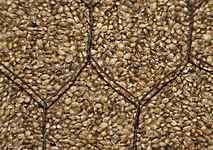

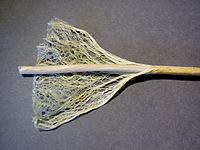




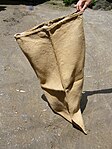











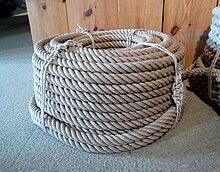
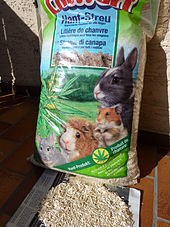
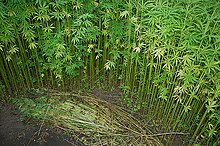
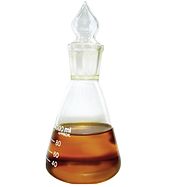
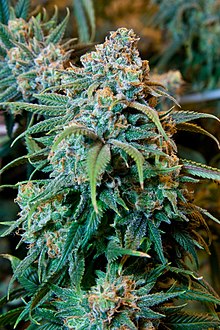
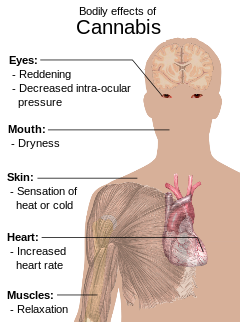




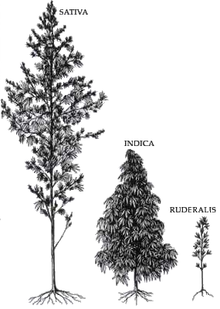


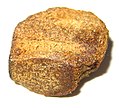





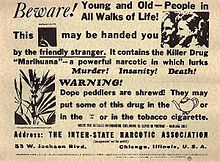


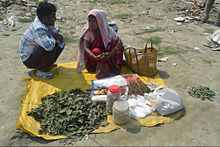
No comments:
Post a Comment